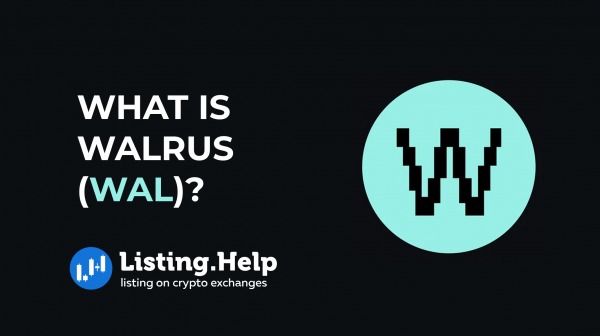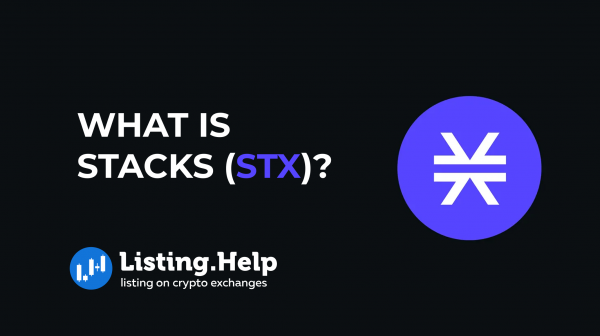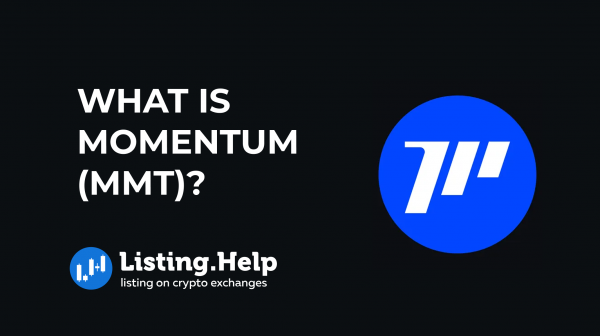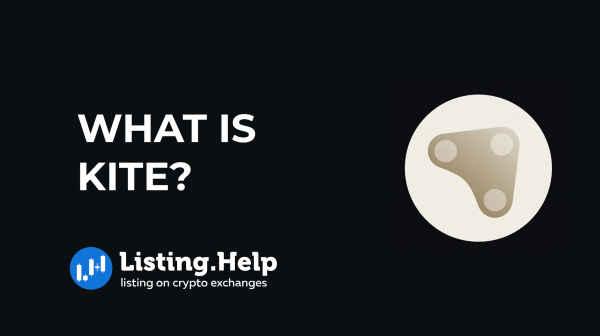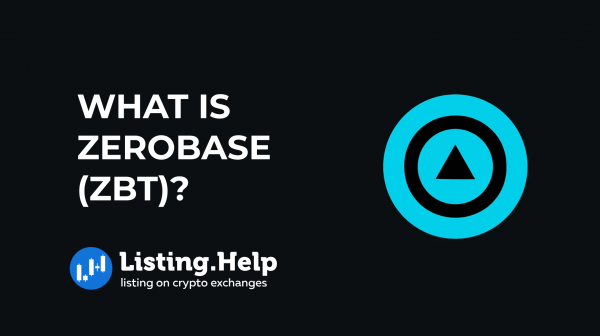What Is Polkadot (DOT)?
 July 3, 2024
July 3, 2024 Updated: July 3 2024, 03:46
Updated: July 3 2024, 03:46
LEAVE A REQUEST
Launching your own token project? Our experts are ready to help with listing on exchanges, market making, marketing and other solutions
SUBMIT APPLICATIONPolkadot (DOT) is a protocol aimed at creating a network where different blockchains can operate together. This enables independent blockchains to communicate and collaborate effectively. The ultimate aim of Polkadot is to establish a fully decentralized web.
The DOT token is the native cryptocurrency of Polkadot. As a governance token, DOT allows holders to influence the Polkadot protocol through voting. It’s also essential for validating transactions via staking and for connecting Polkadot’s parachains, which are parallel blockchains.
Polkadot quickly achieved significant success, becoming one of the largest cryptocurrencies shortly after its launch. Here’s an overview of how Polkadot operates and whether it could be a worthwhile cryptocurrency investment.
What Sets Polkadot Apart?
Most blockchains function independently and don’t interact with each other. For instance, Bitcoin (BTC), Ethereum (ETH), and Cardano (ADA) each have their own distinct blockchains. This isolation means decentralized apps (dApps) built on Ethereum can’t communicate with those on Cardano, and vice versa.
Polkadot addresses this issue by acting as a multichain network, allowing various blockchains to connect and interact. Developers using Polkadot can create their own blockchains that seamlessly communicate with others within the network.
This interoperability expands the potential of the blockchains on Polkadot. For example, a blockchain enabling investments in tokenized stocks could integrate real-time stock data from another blockchain within the network.
Additionally, Polkadot simplifies the development process by handling transaction validation and network security. Transactions are processed on Polkadot’s relay chain, freeing developers to focus solely on their projects without worrying about building a secure validation system.
How Does Polkadot Work?
Polkadot enables the transfer of funds between digital wallets using a combination of public and private key cryptography. The public key hash serves as the address for receiving funds, while the private key acts like a password to authorize and broadcast transactions. These transactions are confirmed in blocks approximately every six seconds, forming the Polkadot blockchain.
Beyond simple fund transfers, Polkadot is a sharded multi-chain network. It is coordinated by a central Relay Chain, allowing data and transactions to be processed simultaneously on multiple chains, called Parachains. This sharded architecture divides the network into segments, or shards, which process transactions in parallel, enhancing throughput compared to traditional blockchains that handle transactions sequentially.
Parachains can connect to Polkadot, benefiting from the network’s overall security. This improves scalability, interoperability, and cross-chain functionality, addressing issues like congestion, high fees, and compatibility seen in older blockchains. Polkadot also manages upgrades automatically without hard forks, governed by holders of the native DOT token.
Polkadot uses a Nominated Proof-of-Stake (NPoS) consensus mechanism. Instead of mining rewards, users earn incentives by staking DOT tokens. Those interested in maintaining the network can run Validator nodes, while Collators maintain Parachain nodes, and Fishermen nodes monitor the network. DOT holders can also become Nominators, staking tokens to support up to 16 Validators. Validators produce new blocks, validate Parachain blocks, and ensure finality.
Who Are the Founders of Polkadot?
Polkadot is a major initiative of the Web3 Foundation, co-founded by Gavin Wood, one of Ethereum’s original co-founders and its former CTO. Wood played a significant role in developing Ethereum’s Solidity programming language. He also leads Parity Technologies, the blockchain infrastructure firm that created Parity Ethereum, a widely used Ethereum client. Wood continues to work on both Polkadot and Substrate development.
Joining Wood in founding Polkadot were Robert Habermeier, a Thiel Fellow, and Peter Czaban, the Technology Director of the Web3 Foundation.
The Polkadot whitepaper was released in 2016, followed by a successful $145 million fundraising round in 2017. Polkadot launched its initial mainnet in May 2020 during the Proof-of-Authority (PoA) phase, where the Web3 Foundation managed network governance. Validators began joining to participate in consensus. The Nominated Proof-of-Stake (NPoS) phase started in June, transitioning governance to DOT token holders and decentralizing control.
After this transition, DOT token holders voted to list DOT on exchanges and support wallets. A redenomination of the DOT token occurred at a 1:100 ratio, leading to DOT’s rise into the top ten cryptocurrencies by market cap.
The mainnet launch followed the successful 2019 alpha release of Kusama, Polkadot’s sister network. Kusama acts as a testbed for Polkadot’s technology, including its native token KSM. In 2020, Polkadot introduced its Parachain testnet, Rococo, marking a significant step towards full Parachain functionality.
Polkadot is now advancing core infrastructure development, including the rollout of Parachain auctions, Parathreads, and cross-chain message passing. This progress aims to establish Polkadot as a fully functional Relay Chain, providing security through NPoS and coordinating the entire system, including Parachains.
Potential Risks
A significant challenge for Polkadot is its limited number of parachains. The network aims to support about 100 parachains, but reaching this capacity will take time. Currently, parachain slots are auctioned off and leased for up to 96 weeks.
This system favors well-funded projects, making it difficult for smaller initiatives with less capital to secure parachain slots.
Polkadot’s governance system also benefits those with more financial resources. DOT tokens serve as governance tokens, giving holders the right to propose and vote on network changes. However, making, seconding, or voting on a proposal requires locking up DOT tokens, and there is no guarantee that these tokens will be returned.
As a result, individuals and companies with substantial DOT holdings have considerable influence over the network.
Polkadot ATMs
Crypto ATMs offer a convenient way for users to buy and sell cryptocurrencies using cash or debit cards. These machines can provide an additional service for merchants who host them. Some ATMs are unidirectional, allowing only purchases, while others are bidirectional, enabling both buying and selling of crypto. As Polkadot is a newer digital asset, not all crypto ATMs currently support DOT transactions, though it’s likely they will include it soon.
Customers can use an existing wallet or set one up at the ATM. Whether purchasing or selling DOT, it’s important to obtain a receipt from the machine for any potential issues.
Although crypto ATMs often have higher fees compared to online exchanges, the growing number of machines — approximately 14,000 globally — should lead to increased competition and lower fees over time.
Is Polkadot a Good Investment?
Polkadot presents an intriguing investment opportunity, as it is still in the early stages of realizing its potential. Its most significant feature, parachains, was launched in December 2021, with more slots being added gradually.
A notable advantage of holding DOT tokens is the potential for passive income. While staking is available for many cryptocurrencies, Polkadot typically offers higher reward rates.
However, it’s important to consider the competition Polkadot faces from other established blockchain platforms. Ethereum is the most well-known, but Cardano and Solana are also strong contenders in the market.
Diversifying your investment across Polkadot and other programmable blockchains might be a wise strategy to avoid over-concentration in one asset. Another option is to include cryptocurrency stocks to build a more varied portfolio.
If you decide to invest in Polkadot, keep in mind that it is still in its developmental phase. It’s best viewed as a long-term investment, with results assessed over years rather than months. Like other cryptocurrencies, Polkadot is volatile, and significant price fluctuations should be expected.

For more insights into the world of cryptocurrency and the latest industry trends, be sure to visit listing.help/blog.







 December 29, 2025
December 29, 2025 
